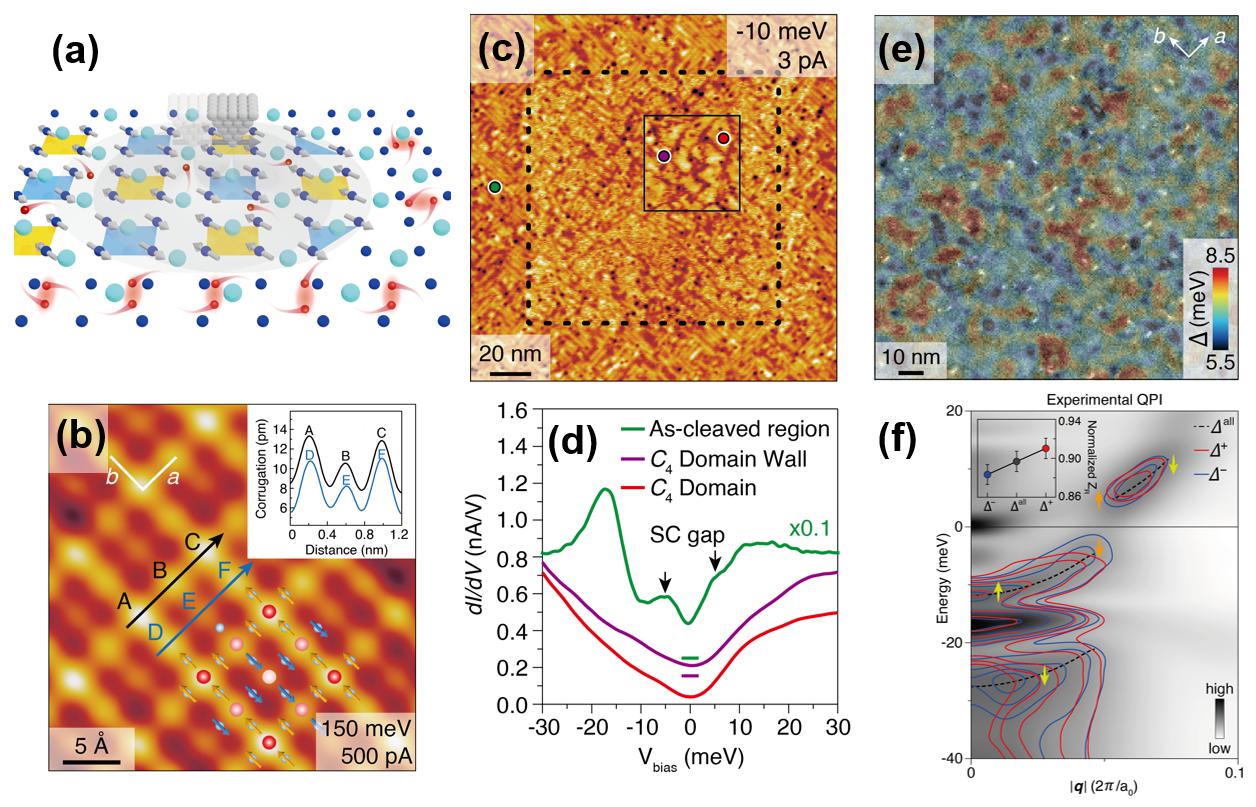We have explored a new mechanism for switching magnetism and superconductivity in a magnetically frustrated iron-based superconductor using spin-polarized scanning tunneling microscopy (SPSTM) [1,2]. Our SPSTM study on single crystal Sr 2 VO 3 FeAs made of alternating self-assembled FeAs monolayer and Sr 2 VO 3 bilayers shows that a spin-polarized tunneling current can switch the FeAs-layer magnetism into a non-trivial C 4 (2×2) order, which cannot be achieved by thermal excitation with unpolarized current. Our tunneling spectroscopy study shows that the induced C 4 (2×2) order has characteristics of plaquette antiferromagnetic order in the Fe layer and strongly suppresses superconductivity. Also, thermal agitation beyond the bulk Fe spin ordering temperature erases the C 4 state. These results suggest a new possibility of switching local superconductivity by changing the symmetry of magnetic order with spin-polarized and unpolarized tunneling currents in iron-based superconductors [3,4]. We also performed high-resolution quasiparticle interference (QPI) measurements, self-consistent BCS-theory-based QPI simulations and a detailed e-ph coupling analysis to provide direct atomic-scale proofs of enhancement of iron-based superconductivity due to the BCS mechanism based on forward-scattering interfacial phonons [5].
[1] Jin-Oh Jung et al ., Rev. Sci. Instrum. 88 , 103702 (2017)
[2] Jhinhwan Lee, Rev. Sci. Instrum. 88 , 085104 (2017)
[3] Seokhwan Choi et al ., Phys. Rev. Lett. 119 , 227001 (2017)
[4] Dirk van der Marel, Physics 10 , 127 (2017)
[5] Seokhwan Choi et al ., Phys. Rev. Lett. 119 , 107003 (2017)
Fig. 1.
(a)-(b) Atomic scale evidence of C
4
antiferromagnetic order induced in FeAs layer of Sr
2
VO
3
FeAs by injection of spin-polarized tunneling current and (c)-(d) resultant local suppression of iron-based superconductivity [3]. (e)-(f) Spectroscopic evidences of local enhancement of iron-based superconductivity due to oxygen vacancies in VO
2
layer (rice-shaped C
2
defects in (e)) which locally enhance coupling of FeAs electrons with the forward-scattering interfacial phonons [5].


